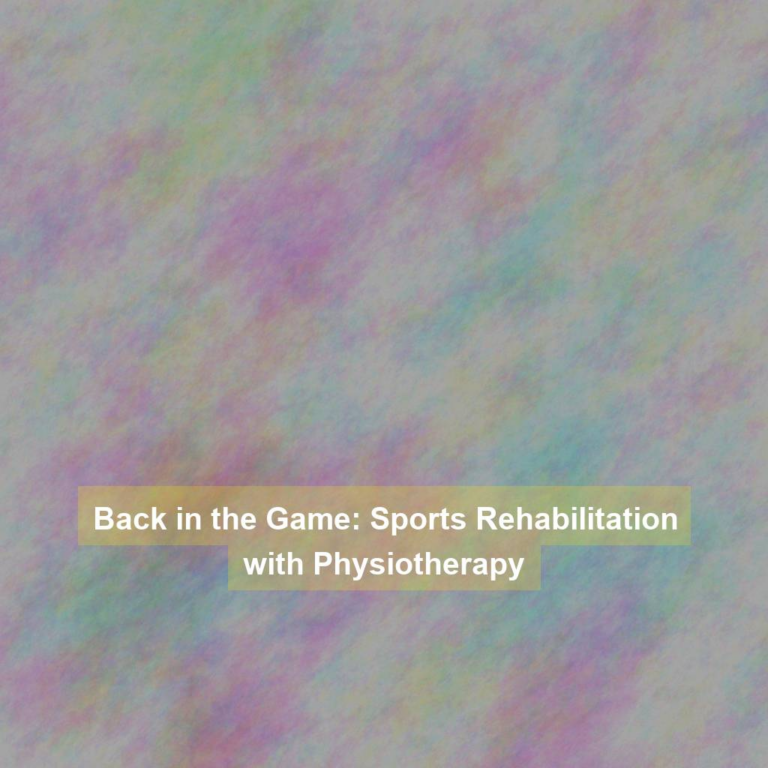Have you ever wondered why some athletes seem to bounce back stronger after an injury, while others struggle to regain their former level of performance?
The journey from setback to comeback is a complex and often challenging process that requires careful consideration and strategic planning.
As you navigate the path of athletic injury recovery, you’ll discover key strategies and insights that can help you not only recover from your injury but also emerge as a stronger and more resilient athlete.
Understanding the Injury
Understanding the injury is crucial for developing an effective recovery plan. When you sustain an athletic injury, it’s essential to have a clear understanding of the nature and extent of the damage. This involves seeking professional medical evaluation to determine the specific type of injury, such as a muscle strain, ligament sprain, or stress fracture. Knowing the exact diagnosis will guide the development of an appropriate recovery plan tailored to your specific needs.
Building a Support System
To facilitate your recovery from an athletic injury, it’s essential to establish a strong support system that can provide encouragement, guidance, and assistance when needed. Surround yourself with individuals who understand the physical and emotional challenges you may face during the recovery process. Family and friends can offer emotional support, motivation, and a sense of normalcy during this challenging time. Additionally, consider seeking out a healthcare team that includes knowledgeable and empathetic medical professionals who can provide the necessary treatment, guidance, and rehabilitation exercises. They can offer expertise, monitor your progress, and make adjustments to your treatment plan as needed.
Furthermore, connecting with fellow athletes who’ve experienced similar injuries can provide valuable insights and encouragement. Online forums, support groups, or organized events can be great opportunities to share experiences, gain advice, and find inspiration from others who’ve successfully navigated the recovery journey. Additionally, consider enlisting the help of a mental health professional to address any psychological hurdles that may arise during your recovery.
Tailoring the Recovery Plan
You can tailor your recovery plan by working closely with your healthcare team to customize a treatment and rehabilitation strategy that fits your specific needs and goals. This personalized approach takes into account your injury, fitness level, and the demands of your sport. Your healthcare team will consider factors such as your age, overall health, and any pre-existing conditions. Together, you’ll set realistic goals and establish a timeline for your recovery.
The tailored plan may include a combination of physical therapy, strength training, flexibility exercises, and sport-specific drills. Your healthcare team will monitor your progress and make adjustments to the plan as needed. They’ll also provide guidance on nutrition, rest, and mental well-being to support your overall recovery.
It’s essential to communicate openly with your healthcare team about any challenges or concerns you may have during the recovery process. This collaboration will enable them to make the necessary modifications to your plan, ensuring that it remains effective and aligned with your needs. By actively participating in the customization of your recovery plan, you’re taking a proactive step towards a successful comeback.
Mental Resilience and Motivation
Collaborating closely with your healthcare team to customize your recovery plan not only addresses the physical aspects but also sets the stage for building mental resilience and sustaining motivation throughout your rehabilitation journey. The mental aspect of recovery is just as crucial as the physical one.
It’s normal to experience frustration, impatience, and even moments of doubt during the rehabilitation process. However, fostering mental resilience can help you navigate these challenges. Setting realistic goals, celebrating small victories, and maintaining a positive mindset are essential. Surrounding yourself with a supportive network, whether it’s friends, family, or fellow athletes, can provide the encouragement needed to stay motivated.
Additionally, keeping a journal to track your progress and reflect on your journey can serve as a source of motivation. Visualizing your successful return to the sport can also help sustain your determination. Remember, setbacks are a natural part of recovery, but with mental resilience and unwavering motivation, you can overcome them and emerge stronger than ever.
Gradual Return to Training
After receiving clearance from your healthcare team, gradually reintroduce training activities to allow your body to readjust and rebuild strength. Start with low-impact exercises such as walking, swimming, or cycling. These activities help in improving cardiovascular fitness and muscle endurance without putting excessive stress on the injured area. As you progress, gradually increase the duration and intensity of your workouts. Monitor your body’s response carefully and communicate regularly with your healthcare team about any discomfort or pain.
Incorporate specific rehabilitation exercises recommended by your healthcare team to target the injured area. These exercises are designed to restore flexibility, stability, and strength. Pay close attention to proper form and technique to avoid reinjury. As you regain confidence and strength, consider adding light resistance training to rebuild muscle mass.
It’s crucial to listen to your body throughout this process. If you experience persistent pain, swelling, or discomfort, scale back your training and consult your healthcare team. Patience and consistency are key during the gradual return to training. By respecting your body’s healing process and gradually increasing the training load, you set the stage for a successful comeback.
Conclusion
So, remember to take the time to understand your injury, build a strong support system, and tailor your recovery plan to your individual needs.
Stay mentally resilient and motivated throughout the process, and gradually ease back into training.
With these strategies in place, you can turn your setback into a successful comeback and get back to doing what you love.
Keep pushing forward and never give up on your recovery journey. You’ve got this!







